I finished Kingdoms of Amalur: Re-Reckoning today at 51 1/2 hours, making it one of the shorter RPGs I’ve finished. According to the Steam achievement, only 2% of the people who purchased this remake on Steam have killed the final boss as of today.
| Achievement | % |
| Destiny Defiant (final boss) | 2.0 |
| Hero of Mel Senshir (reached final continent) | 5.1 |
| Turning the Tide (completed the Adessa plot) | 7.1 |
| No Destiny, All Determination (midgame point) | 17.7 |
| Reborn (started the game) | 87.9 |
I’ve played the original twice before, but never finished it. From my Steam achievements on the original game, I can see that I got past the “No Destiny” point, and was into the desert area leading to Adessa when I stopped playing. Interestingly, according to Steam achievements, only 2% of the players of the original game reached the end — same percentage as in the remake.
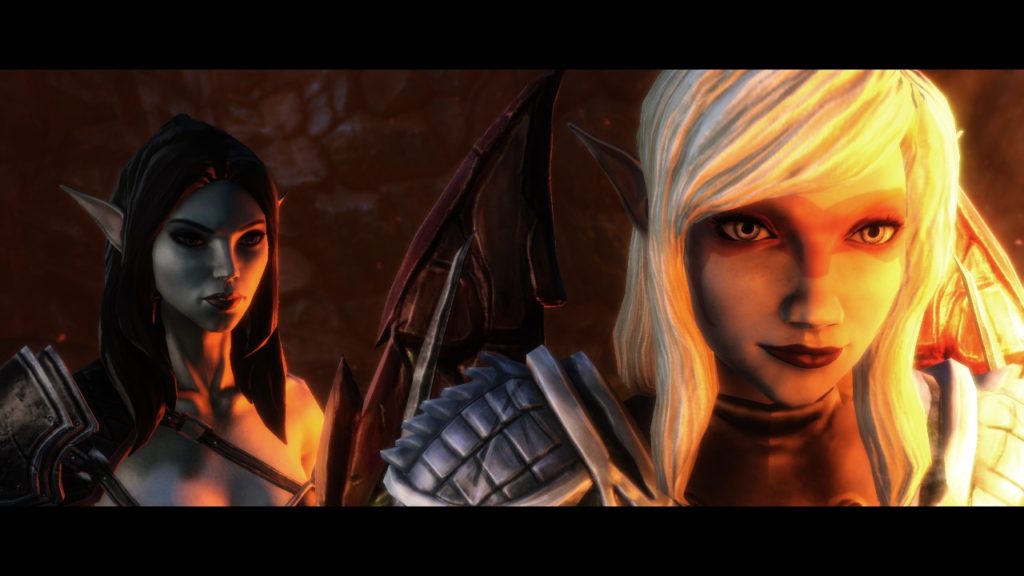
Similarly, 88.6% of the people who bought the original game on Steam actually played it long enough to get through the tutorial, while 87.9% have done so on the remake. About 12% of the players for either game just don’t really play it, and 98% of the people with the game never finish it.
Contrast this with Dungeon Siege III, where only a third of the players made it to the point where there game explains the plot to you, but 6% of the players who owned the game did go on to finish it.
By this metric, Dungeon Siege III, a game I disliked (but finished), was more worth finishing than Kingdoms of Amalur.
Why?
One obvious reason — DS3 is a very short game. I started it on June 24 and finished it June 25, 2011. Thanks, Steam! The game was intended to be played through with each of the three main characters and perhaps with a group, but I never went back to it.
Kingdoms of Amalur: Re-Reckoning comes with two DLC included for free, one of which I completed and the other I nearly completed until a bug cut that short. Even with those additional runs, the game came out quite a bit shorter than Skyrim (150 hours) and Octopath Traveler (135 hours), but about the same as Pillars of Eternity (60.5 hours). 13.9% of PoE players completed the game.

My guess is the blandness of the setting. You generally go from hub to hub, picking up fetch and kill quests, do the needful, return, and head to the next hub. That is the structure of the game from the beginning to the very end — I was still doing those things in the final area before the boss citadel.
Other games give you companions; this game had NPCs you would occasionally take on a quest, but never a companion. You didn’t get a glimpse of your life before you died — other games with similar plots at least give you a glimpse. Your character is a total cipher, with no particular reaction to any of the plot. Your character never even seems to change expression, just always that same placid calm no matter what is going on.
This isn’t unusual in MMOs, but it is very unusual in RPGs, which are typically all about the character growing and changing through the plot.
I guess that really is the key difference between the two types of games — in MMOs, the character is your avatar and has no independent existence. In RPGs, you are helping guide someone through a story.
Once you have settled in on your preferred build, the game doesn’t change that much. It did take awhile for me to dial in on my rogue build in this playthrough, and though I eventually had access to all abilities, I would mostly just drop mines in front of me, jump back, saturate the area with arrows, and then take enemies out one by one. Those that I couldn’t stealth kill, anyway.
Another might be that the game is not challenging at all on “normal” mode. Once your smithing skill is high enough, you can make all the gear to trivialize the game that you might think you need. I focused on smithing and sagecraft (gem making) and largely, at the end, was impervious to physical damage and could quickly kill anything that wasn’t immune to same. Magic was another story.
The big surprise: all those non-finishers are missing out on a great murder mystery.
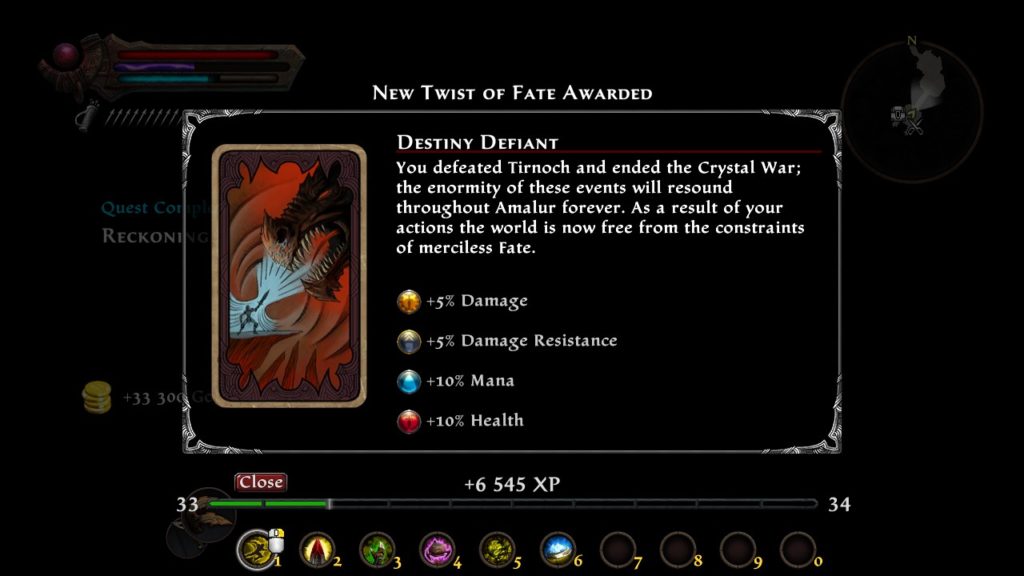
There are three questions about your history that you spend the entire game trying to answer:
- Who are you?
- How did you die?
- Why don’t you have a destiny?
In the world of Amalur, everyone’s destiny is written at their birth. The Fae live their lives in a cycle; they are born and live and die, then are born and live and die the very same lives in the very same way, doing the very same things. Some of them are pretty angry about this but their fates — called ballads, for them — are written.
Since you don’t have a fate, whenever you interact with a Fae, you are changing the tales they live by and largely they just want you to leave so they can go back to their well-traveled existence.
Spoilers ahead…
Since only 2% of people will finish the story, I’m just going to spoil it.
You and your companion Alyn Shir were two members of a secret society suppressing the knowledge of the existence of an extraplanar godlike being, the dragon Tirnoch, that promises great power in exchange for someone to open the portal that seals it from Amalur. Tirnoch promises to cleanse the world of all mortal life, which makes some Fae very happy. These Fae working to bring Tirnoch back to the world are the Tuatha Deohl.
As part of your cover story, you were working with the Scholia Arcana, a gnome group, to create a Well of Souls, a machine that resurrects the dead and allows mortals to live as do the Fae. Two were eventually constructed; one by Vintrinio, your boss, and the other by Fomorous Hugues, whom you meet upon your resurrection.
Both Wells were powered by Prismere Crystals, crystals found in Alabastra and formed by the power of Tirnoch as she struggled to escape her prison. The crystals were tearing the Fae land of Alabastra apart. You, in your previous life, were responsible for leading expeditions into the Tuatha lands to gather prismere to power the Wells.
In your last expedition, you went too deep and were captured by the Tuatha lord Gadflow and sacrificed to Tirnoch. Tirnoch decided you could be used as a tool to bring about her release to the world and arranged for you to be resurrected by the Well of Souls without a Fate so that you could unweave her prison when you were sacrificed a second time. Tirnoch claims you begged for the chance to be returned to life, even as a tool of the world’s destruction.
Your resurrection in Hugues’ Well instead of Vintrinio’s was a mistake. Gadflow sent Tuatha assassins to retrieve you and bring you back to Alabastra, but your ability to change the Fate of all you met eventually made it impossible to predict your location. All they could do was continue to keep the pressure on the mortal lands by taking Mel Senshir and from there, Rathir and the rest of Amalur and wait for you to show once more.
Gadflow couldn’t believe his good fortune when you defeated the siege at Mel Senshir and started heading in his direction. For more about that, watch the video I embedded.
It’s a pretty good story. Most of it is told to you during the final chapter of the game in large infodumps.
And this, I feel, is the biggest issue with the game — there’s a story there, but they hide it from you until the end. If the story had been better paced, I think far more people would have finished the game.
So ultimately, I believe KoA:R, the original one, was hobbled by having to provide a feeling for how the related MMO, Project Copernicus, would play. The information about your past and your part in current events could have been doled out better — hints are given here and there, but no firm answers.
Since the remake doesn’t change the story at all (as far as I can tell, having not finished it before), nothing changes. It’s the prelude to a game that will never be made, and that’s all it will ever be. Its Fate is written.
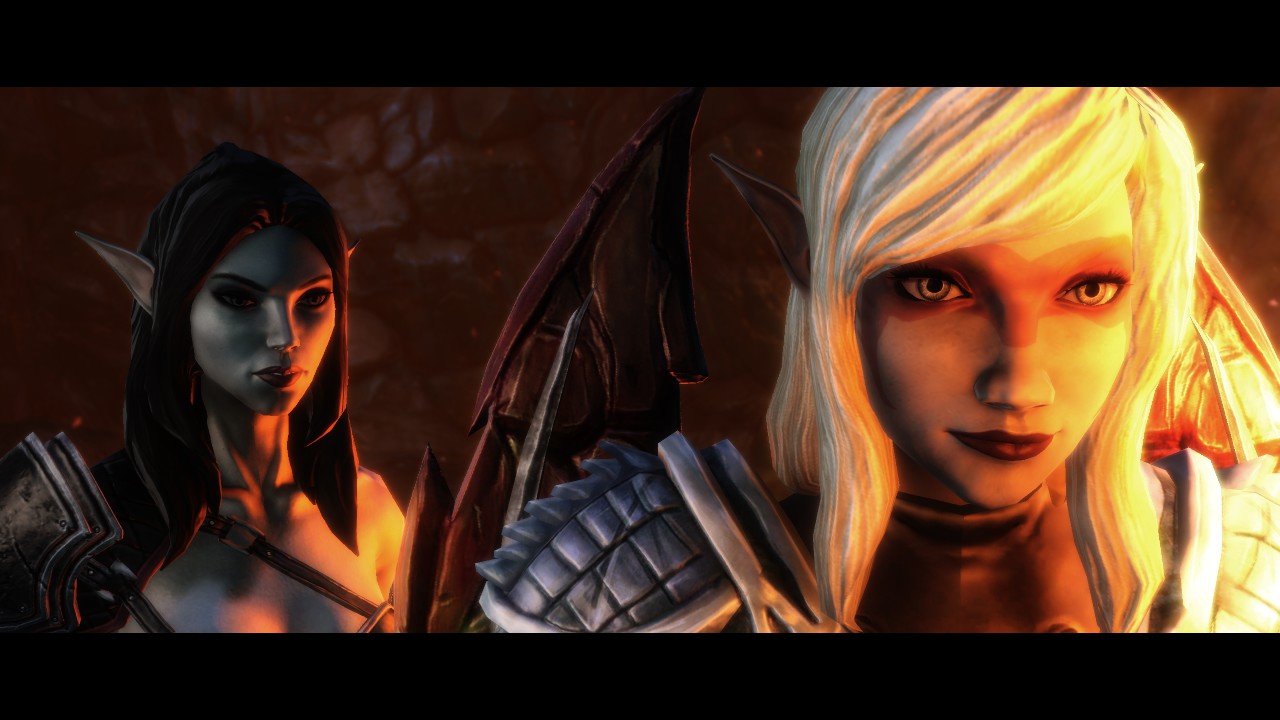
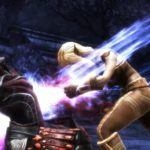

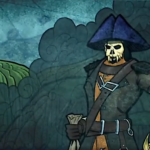

Aye, agree with your assessment in full — albeit just based on now somewhat dim recollections of the first release of Amalur. I remember *wanting* to quite like it, I even started over a couple of separate times. But I never made it terribly far in the grand scheme of things. Pretty sure I never made it much past the spider web infested village right up near the beginning end of the game, even.
Despite that, I have had an eye on the re-release. But I figure now I’ll wait until it either ends up in the Humble Choice bundle or comes in at a deep, deep discount in a sale.
There are definitely things to recommend it — the graphics are nice, and your character’s abilities are very customizable — but only 2% finishing rate points to fundamental issues with the way the game tells its story. Saving the bulk of the story until the end was, to my mind, a major misstep.
I’d guess I’ve probably finished less than 2% of al the video games I’ve ever played. I never really saw games as something you “finish”, like a novel or a movie. Games are something you play – until you’ve had enough of playing and then you move on. .
I have a bunch of unfinished books as well as games, and while I didn’t finish them, most of the RPGs I play are stories with an end. If the writers have done their job well, its an ending worth experiencing, and if the developers told that story well, players will want to stick with the game until they see it. For Amalur, they had a powerhouse like R.A. Salvatore write the story, but Big Huge Games did not tell that story well. The Steam stats back me up on this; the few RPGs I actually finished that had achievements for finishing them had a finishing rate from 10-15%, typically. 2% is a failure.